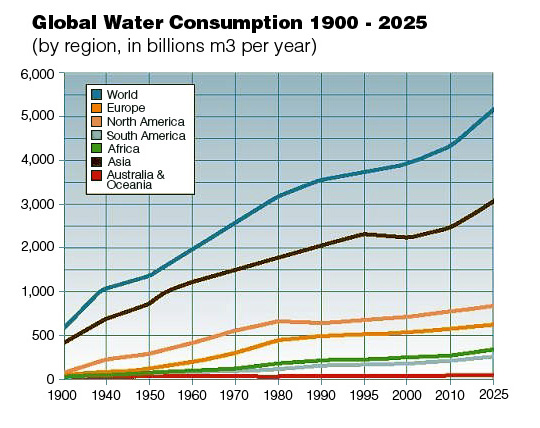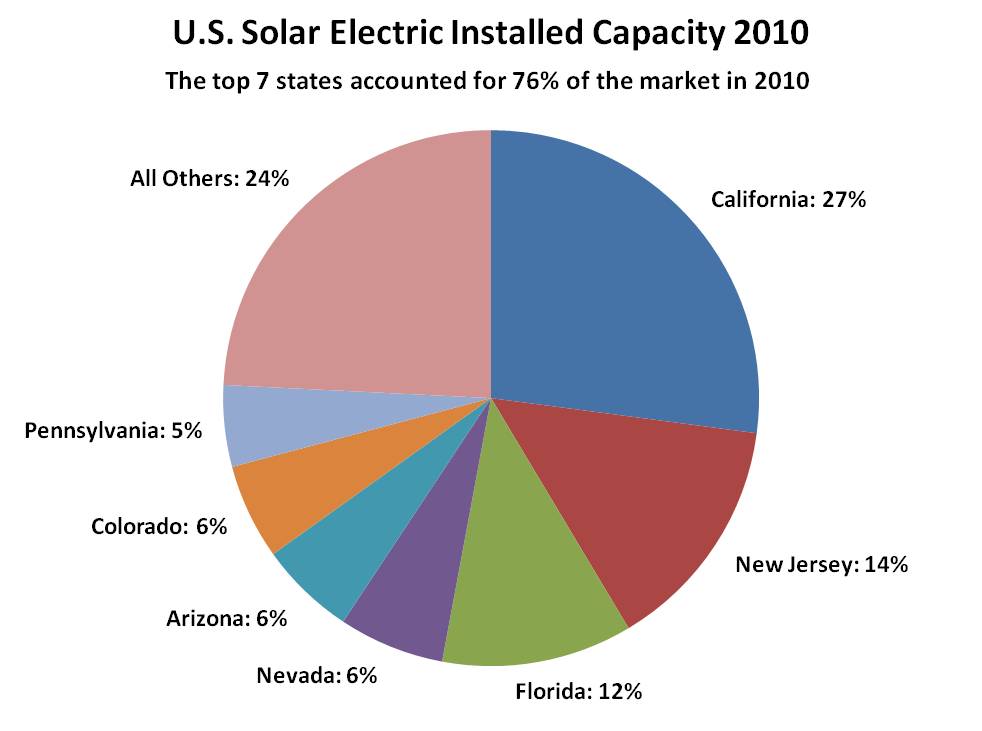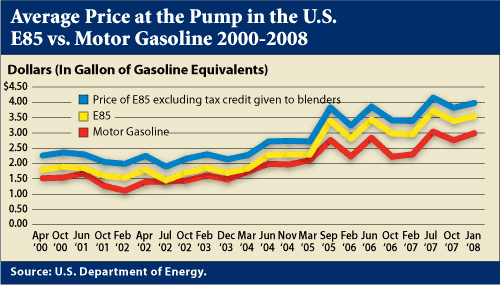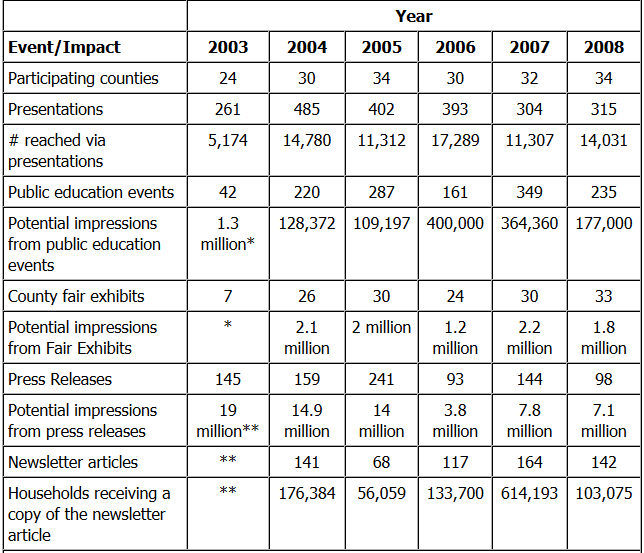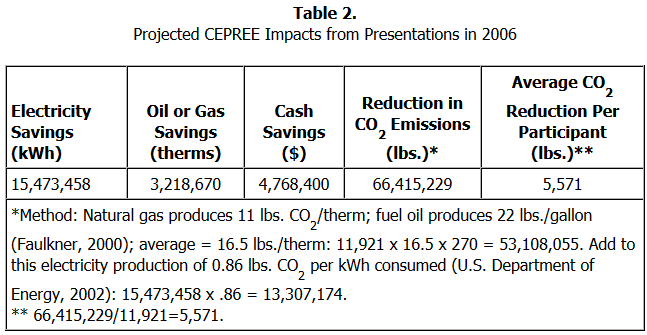Background
Energy is a large user of freshwater throughout the world as up to 4 percent of the freshwater in the world goes into the production of energy in some form [1]. In other words, the more energy the world utilizes the more water we use up. Certain types of new alternative energies, such as ethanol, use a lot more water than conventional fuels use [2]. Thus, a major decision for policy makers around the world is to decide how to allocate water resources in water scarce regions and how to balance this with energy production as well. Energy will make the country money and make the populace more comfortable; however, the water it utilizes could also risk the lives of people near dehydration. Energy and water are in direct conflict throughout the world since all people need energy and water to survive. The energy versus water problem needs to be addressed.
Although technical solutions such as the generation of new biofuel technology or wind power have been extremely useful in their ability to create alternative energy solutions, these solutions are difficult to implement throughout the world because they are not always tailored to the particular political and cultural situation present in that area. Sometimes these innovative solutions, as in the case with biofuels, utilize more water than traditional fossil fuels Furthermore, although some of these new ideas can reduce the environmental impact of certain fuels and reduce the amount of water that is used in the creation of the fuel, many of these possible solutions are impractical economically, politically, or use too much water for a certain country in its stage of development. Therefore, it is important for implementers to develop an effective strategy for a region on a case to case basis.
Also, it is important to figure out how to get people to reduce their energy consumption in general. This reduction will also reduce water use and alleviate the future conflict between energy and water as total energy use by companies and civilians alike is supposed to increase by 56 percent by 2040 [3]. Moreover, as seen in figure 1, water demands are also expected to increase – creating a larger conflict between energy and water. As a result, in order to develop strategies to effectively reduce water usage, world leaders must consider energy usage as well.
Figure 1: As global water usage continues to increase, it will be important to consider energy as a means to deal with the problem. By reducing energy usage, we can mitigate the demand and usage of water [11]
Social Problems with Reducing Energy Consumption
Initially, the problem with reducing energy consumption comes at an individual level country to country. In developed and rich countries such as the United States people consume more energy than they need to survive. The question ultimately becomes, when people have enough resources and money to utilize a more convenient and comfortable manner of doing something, why should they stop even though it uses more energy?Furthermore, why should a person in a developed country change the style of life if they will not receive any of the benefits of the reduced energy use in their region and in their lifetime?
Also, in less developed countries, the people utilize less efficient forms of energy because they are convenient to the people. They do not have access or the money to use different energy sources. An example of this is slash and burn agriculture in rural Brazil in which these people who live in impoverished regions lack the infrastructure needed to access more efficient energy resources. Hence, they destroy their local ecosystem and use water and energy inefficiently.
It is important to note that if the above problems involving energy were fixed in a regional manner it would not change the amount of water available in a different area of the world. For instance, the development of water efficient coal mining in North America would not significantly alter the amount of water available in South America. However, if small changes take place at the local level to increase energy efficiency and use, then there will be more water available at the micro local scale.
Possible Solutions
Mission 2017 recommends the formation of an international organization committee to advise countries’ governments on which energy source is best for them based on each country’s economic growth, available resources, and GDP. By keeping energy production more local, the people of those countries will be more likely to back new types of energies [4]. Furthermore, local energy production will reduce transportation of energy and subsequently lead to a smaller energy usage overall since transportation itself consumes energy. In terms of water, we could save water and cut total costs by 8 percent [5].
By keeping energy production more local, the people of those countries will be more likely to back it because people have pride in their national industries and the people will also possibly be employed by the energy production companies. If people feel more responsible for their own energy production, they would be more likely to change their previous attitudes regarding fuel and energy production since they are closer to the problem and more responsible for its implementation. The development of local energy production is a longer term solution (50 to 100 years at least) since it will involve the creation of infrastructure where there may not be right now. This also may be difficult and is probably the least feasible of all the social solutions presented here because some regions do not have the basic infrastructure such as roads and transportation as well as a stable government to accomplish local energy solutions in all areas of the world. Yet, by keeping energy in the form of wind, solar, desalination, or another convenient form of energy production, local regions will save on the water and money used to create the energy in the long run [6].
Although large scale energy production for a community or area may be a long term solution, local and smaller energy production can have an impact in a quicker manner. For instance, economists believe that the development of the solar power industry in the United States had a meaningful impact on the United States recovery out of the recession early in the 21st century. In 2012, 1 in every 230 jobs was in the development and enhancement of the solar power industry adding a total of 13,872 jobs nationally [7]. Furthermore, in 2012 as well, 37,400 were added in “green energy and transportation” in quarter two of 2012 [7]. Most importantly, this case study demonstrates how the development of local green energy solutions such as solar power can not only help in the creation of clean energy but also generate jobs. In figure 2, it is evident that production of solar energy is concentrated in a few states in which solar energy is economically and physically feasible. Hence, solar energy is a local solution that will initiate local jobs. If green industries are generating jobs and competitive economically, they will be more likely to generate public support.
Although solar energy uses more water than conventional power sources, it is not as water intensive as first generation biofuels. Yet, solar power does not contaminate the environment as much. Most importantly, because of the increase in solar panel usage, the water consumption of solar power could decrease by means of a newly innovated dry cooling system that reduces water consumption by 71-78 percent as compared to the previous wet cooling method [8]. As will be the case with many new developing green technologies, as their usage increases not only will their energy become more efficient but they will also use less water in their production – significantly cleaning the environment and saving water.
Figure 2: Solar power output is concentrated locally in a few states in the US [12]
Secondly, if people feel like using more energy will hurt them economically, they will decrease their energy consumption or a change in which energy types they utilize for instance, to drive their cars. This could take the form of a tax on certain energies and/or a subsidy of an alternative energy source that is believed to have a lower environmental impact and less water usage. In figure 3 below, the decreased price for E85 Ethanol is shown to demonstrate how United States lawmakers made E85 economically competitive with motor gasoline. In spite of the fact that the subsidy of E85 Ethanol in the United States supported a biofuel that actually used more water than traditional fuel sources, the subsidy allowed Ethanol to compete in the market with gasoline. The subsidy had a significant effect on the amount of ethanol sold from 2000 to 2010s. Ethanol is now 10 percent of the US market share of US gasoline and sold 13.2 billions gallons of E85 ethanol in 2010 as compared with only 1.63 billion gallons in 2000 [2]. From this study, it is clear that governmental actions can significantly affect the behavior of its citizens. Thus, governmental and International Organizations’ actions can make more environmentally friendly and less water-intensive fuels more competitive economically especially as their water usage decreases with further development and research on biofuels.
Figure 3: Government subsides significantly lowered the price of E85 in the first decade of the 21st century [12]
For example, the United Nations Educational, Scientific, and Cultural Organization (UNESCO) has suggested local development of alternative energies in Africa to develop a sustainable energy basis for the African region in particular. They have helped pioneer through financial considerations and expert advisory commissions a large solar panel project in Saunier, Nadine Israel. UNESCO organization has helped areas such as Nadine, Israel leverage funding through fundraisers and donations for the local energy projects that take place [5].
In general, Mission 2017 proposes an organization that could help expand of the current UN plan to provide expert and financial help to locations lacking energy resources and infrastructure. This plan, as is the case in Israel, could take place in a relatively short period of time if basic infrastructure in the region such as roads and a somewhat educated populace is available since it will be only limited by funding and construction. In places lacking infrastructure, the process will be more expensive, take more time and be less feasible. Our plan will help some impoverished areas make and fund decisions that will increase energy production, decrease the environmental impact, and generate local support through jobs in the region.
As a result of these problems, we propose local commissions for each region made up of local educated civilians, government, and experts in the energy or water field to advise countries and areas on certain energy policies and how they will affect water supplies and the environment. Although this would be somewhat inefficient, careful management of energy and water supplies with the support of the general populace could prove to be very useful in order to get the people’s backing on a proposed measure in a country.
Yet, there also needs to be educational programs possibly through simple commercials, public education, or presentations that demonstrate the significance of each individual person’s energy use. Although the residential sector is responsible for 21 percent of energy use in the US, there are many possible ways to reduce this consumption. It is necessary for the populace to understand that their actions do make a difference in the future and current state of the world. It should also be noted that each person’s energy consumption not only depletes the environment and future energy supplies, but also utilizes a lot of water. If people feel more powerful and responsible for the problem while also being more aware of it, they will be more likely to change. The education of the populace is a comparatively cheap solution to the problem and is an easily feasible solution in almost places in the world at this time [9].
The following is a case study which will quantify how educational programs could change consumer behavior over time. In 2003, The Consumer Education Program for Residential Energy Efficiency (CEPREE) with partnerships with Cornell University and New York State Energy Research began an educational study in more than thirty countries to try to persuade the average person to reduce their daily energy usage through different mediums. They utilized newsletters, presentations, newspapers, fair exhibits and much more to try to receive as many “impressions” from the public as possible. Subsequently, they estimated the number of people they made impressions on in each of the years from 2003-2008 [10]. Notice in figure 4 how many people on whom CEPREE was able to make an impression as only one organization. After every year, CEPREE sent out surveys that asked if attendees had changed their habits of energy usage over the year and on average 69% of respondents said they had. From these numbers and the estimates on the number of people the organization contacted, CEPREE was able to quantify the energy saving in dollars, kilowatts and carbon dioxide emissions as seen in figure 5 [10].
Figure 4: Table of Information and potential impressions for CEPREE educational programs from 20003-2008 [13]
Figure 5: Projected impacts in money, carbon dioxide emission reduction, and electricity savings of educational programs by CEPREE in the year 2006 [13]
Based on the above case study, Mission 2017 believes that educational programs such as CEPREE can make a significant difference in the conservation of energy by individuals. Furthermore, through each little bit an individual saves it will make a large difference in the state of the environment and energy reduction as seen above in figure 5. The above study shows a quantifiable example of how education programs will reduce energy usage and as a consequence water usage. Finally, in spite of the fact that the above case study involves energy, it provides evidence that similar educational programs should be utilized to reduce water usage in general – not just energy.
Finally, it is necessary to educate world leaders about these issues so they can make educated decisions for their people. In water scarce countries, the type of energy resources they choose to utilize may be seriously altered by the fact that certain resources will use minimal water. We believe International Organizations need to create an organized system to advise all nations on the types of energy they will use while keeping in mind the economic feasibility of that solution for that country in that period of time.
It is important to note that although we focused on the issue of energy conservation through social means in this article, many of the ideas listed above can be applied to water conservation without energy as well.
References
1. Galbraith, K. (2011, September 18). How Energy Drains Water Supplies. The New York Times
2. Stratfor. (2011). U.S. Ethanol Subsidies End as Brazilian Production Shrinks. Business Source Complete.
3. U.S. Energy Information Administration – EIA – Independent Statistics and Analysis. (2012, July 25). EIA Projects World Energy Consumption Will Increase 56% by 2040.
4. Renewable and Alternative Energies | United Nations Educational, Scientific and Cultural Organization. (n.d.). Renewable and Alternative Energies | United Nations Educational, Scientific and Cultural Organization.
5. Water & Energy Efficiency. (n.d.). Home. Retrieved from http://water.epa.gov/infrastructure/sustain/waterefficiency.cfm (Accessed November 24).
6. Henderson, K., Somers, K., & Stuchtey, M. (2013). Measuring the real cost of water. McKinsey Quarterly, (1), 24-25
7. Delucchi, M. A., & Jacobson, M. Z. (2013). Meeting the world’s energy needs entirely with wind, water, and solar power. Bulletin of the Atomic Scientists.
8. Klein, S. J., & Ruben, E. S. (2013). Life cycle assessment of greenhouse gas emissions, water and land use for concentrated solar power plants with different energy backup systems. Energy Policy, 63, 935-950.
9. Trutnevyte, E., Stauffacher, M., Schlegel, M., & Sholz, R. W. (2012). Context-Specific Energy Strategies: Coupling Energy System Visions with Feasible Implementation Scenarios. Environmental Science & Technology, 46(17).
10. Laquatra, J. (2009). The Consumer Education Program for Residential Energy Efficiency. Journal of Extension, 47.
11. Low Impact Living. (n.d.). a thirsty nation. Retrieved from http://www.lowimpactliving.com/pages/your-impacts/water1
12. The energy report. (2008). Retrieved from http://www.window.state.tx.us/specialrpt/energy/renewable/ethanol.php
13. Laquatra, J., Pierce, M., & Hemholdt, N. (2009, December). The consumer education program for residential energy efficiency. Retrieved from http://www.joe.org/joe/2009december/a6.php
